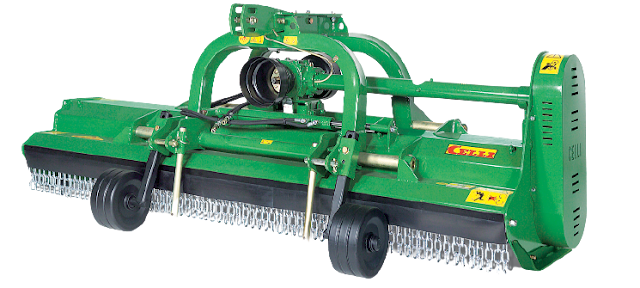Mulching is a great practice, which is not only effective for the replenishment of soil, but it can also help you prevent the germination or growth of weeds in your vineyard. It also helps you create even moisture conditions and conserve water, which eventually helps you promote or enhance the growth of produce. Moreover, the mulched crop residue decomposes quickly, which is good for the prevention of pests and various diseases in the plants. If you can’t already tell, we’re here to inform you that having a mulcher in your tool kit is essential. You may be wondering what an orchard mulcher is and what’s involved in the process of mulching.
A mulcher is a machine that is designed to cut and chop the grass and other kinds of vegetation into small particles that are left on the site as mulch, leaving the site clear for various purposes in the agriculture business. Further details about the applications and benefits of mulching are provided below:
Applications of Mulchers:
Mulchers find their applications in various places. Some of those applications are listed below:
- Mulchers can be used for the sake of land
development and can be employed to clear out the gorse, broom, matagouri,
tea tree, rice grass, tussock, thistles, rushes, and various other types
of vegetation and small trees.
- Mulchers are considered ideal farm equipment for
the purpose of topping a pasture. A mulcher is capable of cutting the
grass and weeds in a fine manner. This lets the fast-growing nutrients
break down into the soil swiftly, which ultimately helps in boosting the
regrowth.
- Mulchers are capable of dealing with crop residue in a more efficient way in comparison to other machines. Mulchers will mulch the crop residue finely, enabling you to cultivate easily and quickly. Mulching the residue of crops makes the operation of cultivation equipment easier. After mulching, the stubble is buried after breaking down, otherwise, it will consume a large quantity of nitrogen from the soil.
Benefits of Mulching:
Here are some key benefits of mulching to help you understand why it is a good practice.
- Mulching your lawn is good for the
environment! Yes, you got it right! The reason is mulching the grass keeps
its clippings out of landfills. According to a recent research report,
waste produced because of yard trimming accounts for up to 13 percent of
the total waste stream produced throughout the whole country. If we convert
this percentage into the form of tonnes, it will be 28 million tonnes
approximately. It should be noted that grass clippings make around two
thirds of the total yard waste. Mulching allows you to leave the mulched
grass on the turf, which decomposes swiftly, thus reducing your waste yard
and allowing you to reduce your footprint.
- Mulching helps you control the evaporation of
moisture from the lawn. If the moisture in the soil is balanced, it will
keep the temperature of the soil cooler. The optimum temperature of the soil will
enhance the healing and growth of turf eventually.





